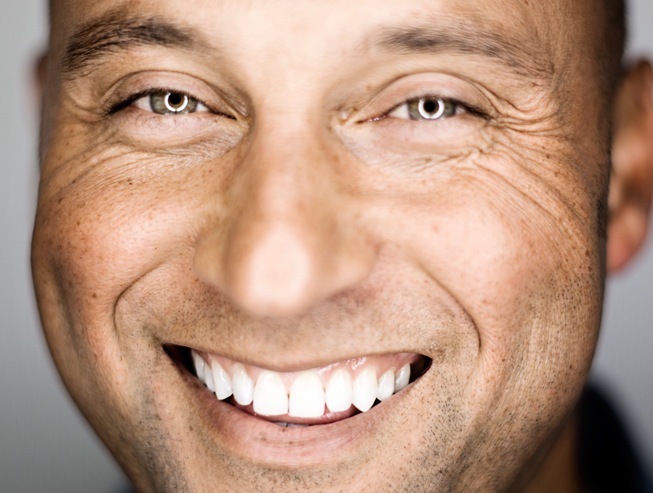
Derek Jeter
My first real introduction to baseball was my cousin Richie’s autographed Don Mattingly placard. He put it on his shelf after meeting him thanks to the Miliken Boys’ Club in 1991. I didn’t understand the sport, and didn’t care for it since I already had Patrick Ewing and the Madison Square Bullies playing at their peak. My interest in baseball grew because I too became a member of the Boys Club, observing as the uniformed kids clapped their dusty cleats while the rest of us played pool or watched a movie. I got to go to the Old Yankee Stadium for the first time in 1992 (My counselor would say, “You’re not getting a ball from these seats unless Jose Canseco smacks it harder than he’s ever done in his life!), but I didn’t really appreciate it until 1996.
Enter Derek Sanderson Jeter.
From the beginning, I found myself gravitating towards that team because they looked like they were having serious fun. In particular, Jeter looked like he could have been one of the kids who I saw play in East River Park, the ebullience and bounce every time a play went his way. Even the odd fro-coiffe Jeter sported on his head for most of his life made him seem more, not less, approachable. He had a billion interviews, none of them particularly interesting, and the commercials always came off effortlessly. He just had to smile and deliver the lines. His at-bat routine (slow walk, square feet in the batter’s box, right arm extension while re-shuffling his feet, squint at the pitcher, reserve swing his bat two times, then the ready nod) must have added a full 10 minutes to the game, but everyone watched at attention just the same.
He was the man.
Mark McGwire and Sammy Sosa carried MLB from the depravity of the full-season lockout of 1994. The New York Yankees rebounded from having their owner suspended from baseball in the early 90’s while Buck Showalter and others in the Yankee brass played the waiting game with their farm system. Paul O’Neill, Scott Brosius, John Wetteland, Mariano Rivera, Bernie Williams, Andy Pettitte, David Cone, Tino Martinez, and any number of players from the dynasty years may have had more critical numbers during the dynasty years (1996 – 2000).
None of this mattered. Derek Jeter was the everyday shortstop, and gave it everything he had on the field. And I kept watching.
As I’ve gotten older, though, there’s all this other stuff that comes to the fore, too. His 2001 locker-room interview after the Yankees lost to the Diamondbacks and, still drenched in sweat and adrenaline, exclaimed cynically that these weren’t the same dynasty Yankees, almost dismissing his own .148 batting average in the series. The seemingly infallible Jeter, the one who for years controlled every bit of his persona on and off the field, came unraveled in a Derek Jeter | The Jose Vilson:
